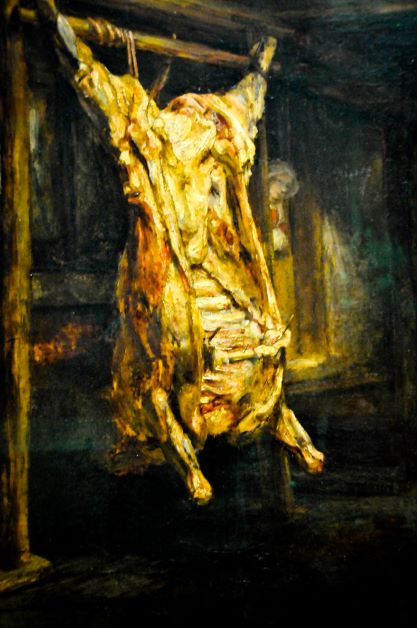
Seeing Art for What it is
One of the most fascinating of the developments that occurred during the 18th century was the recognition of an independent aesthetic attitude toward art, and indeed toward the world. Of course, this is not the first appearance of such an attitude in mankind’s artistic history; far from it. But in mainstream European thought, the attitude toward art had since the Renaissance been closely tied to its function, whether religious, patriotic, or at least as a reflection of the nobler side of human endeavor. At the end of the century Goya is able to elevate the most disgusting of subjects to the level of high art, both by its handling of light and shade and composition, and its reference to noble figures from “high art”.


In the artistic academies of Europe, the principal basis on which a painting was to be judged was the nobility of its subject. There was a hierarchy of subject matter, at the top of which was “history painting”–great battles, the affairs of kings, and anything from Greek and Roman history or mythology– and at the bottom, “genre painting”—scenes of ordinary life, such as this work by Chardin. Critics were quite able to recognize that the Chardin was wonderful, “excellent of its kind”, but could not allow that it should be considered in the same breath with a work that set itself to elevate your mind to higher thoughts.
A work which gave 18th century aestheticians fits was Rembrandt’s “Flayed Ox”, a work with a subject so inherently repulsive that it could not even enter the spectrum of acceptable subjects for painting. And yet, they were able to appreciate its wonderful passages of paint – in short, its aesthetic appeal – without being able to explain how it was possible.
Finally, toward the end of the 19th century, philosophers like Berkeley hypothesized that we are able to separate one kind of reaction from the other. He proposed that when we are contemplating an object aesthetically, we do not for the moment consider its “utility”. An old hag, who would necessarily be an object of abhorrence, or at least pity, when contemplated from the viewpoint of “utility”, might be thought of as beautiful when we contemplate her purely as an aesthetic object.
What a discovery! It seems to us so obvious as to be trivial today, which in itself goes to show how powerfully the aesthetic attitude has affected the way we see. Its power was not merely to allow us to see why we can love a flayed ox; it allows us to revisit all the great masters and see them differently. We may decide that what separates a Raphael “Madonna and Child” from the many lesser imitations is, at least in part, its formal qualities: balance, harmony, symmetry, purity of color. From here it is an easy step to say that these qualities are just as great in the Chardin as in a Raphael, despite the difference in subject. And from there, an easy step to the concept that subject is not relevant to the fundamental character of art at all.